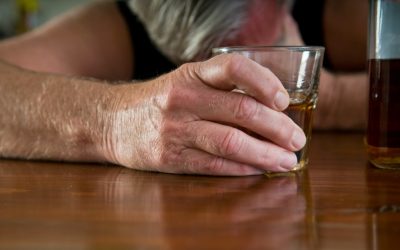Instances are also reported within the high-dosage category of more serious developments such as seizures and psychotic reactions. Withdrawal from normal dosage benzodiazepine treatment can result in a number of symptomatic patterns. The most common is a short-lived “rebound” anxiety and insomnia, coming on within 1-4 days of discontinuation, depending on the half-life of the particular drug. The second pattern is the full-blown withdrawal syndrome, usually lasting days; finally, a third pattern may represent the return of anxiety symptoms which then persist until some form of treatment is instituted. Physiological dependence on benzodiazepines can occur following prolonged treatment with therapeutic doses, but benzodiazepine withdrawal it is not clear what proportion of patients are likely to experience a withdrawal syndrome.
The Benzo Withdrawal Timeline
Patient compliance rates are increased and patient discomfort is reduced when you factor in the patient’s experience and adjust the taper rate accordingly. Psychological effects also include the risk of developing dependence, as some individuals may misuse or become addicted to these drugs. Combining benzodiazepines with other substances or medications, such as antidepressants, can lead to the development of mental illnesses such as panic disorder or depression. As withdrawal progresses, patients often find their physical and mental health improves with improved mood and improved cognition.
How does benzodiazepine withdrawal differ from withdrawal from other substances?
An outpatient program provides flexibility, enabling patients to continue daily routines while receiving treatment. The primary goal of treatment services is to address addiction effectively by managing benzodiazepine withdrawal symptoms and promoting recovery. Benzodiazepine withdrawal is a series of physical, emotional and behavior changes experienced when a person tries to reduce its dose or cease taking a benzodiazepine like Xanax, Klonopin, Ativan, Diazepam, Librium or Onfi. When a person becomes physically dependent on benzodiazepines their body and brain become so accustomed to having the drug that they will experience withdrawal symptoms when you cut down the dose or stop the drug. While they can Alcoholics Anonymous quickly relieve symptoms of anxiety and panic, these drugs pose a high risk of dependence. In other words, your body may rely on benzodiazepines to function if you take them frequently and for more than a short period of time.
One to Two Weeks

Conversely, those who have used benzodiazepines for a shorter period may experience a less severe withdrawal phase. The process of withdrawing from benzodiazepines is not only complex but can also be perilous if not approached with caution and proper medical oversight. Understanding the benzodiazepine withdrawal timeline is crucial for individuals and healthcare providers alike to prepare for and navigate the journey towards recovery.
What is Post-Acute Withdrawal Syndrome (PAWS) for benzodiazepines?
- Many of these people have taken benzodiazepines for 20 years or more and/or have had bad experiences in withdrawal.
- Remember, withdrawal is a temporary phase on the journey towards healthier living.
- Withdrawal of short acting BZD’s generally starts within 1-2 days of last use, peak at 7-14 days and gradually subsides.
- Neither drug had any effect on the severity of withdrawal symptoms, but the rate of taper was 25% of the benzodiazepine dose each week – a rather fast withdrawal!
This has led to the ‘windows and waves’ metaphor that many benzo injured people use to refer to periods of time when symptoms are elevated and severe; or they have reduced for a period. Benzo withdrawal can be fatal when done without medical supervision and when dependence is severe. It is critical for those looking to beat benzo dependence to consult with medical professionals for guidance on how to taper off benzos and to have a supervised safe benzo withdrawal protocol. Those facing acute benzo withdrawal will often be supported with medications, therapy, and peer support groups to address their physical, mental, and emotional needs.
Someone’s age at the time of benzodiazepine use and addiction has a very large impact on the severity of their withdrawal symptoms as well as the duration and possibility of a full recovery. It has been documented that elderly people suffer much greater cognitive deficits during and after benzo withdrawal. In addition, they typically recover more slowly, and the degree to which they recover is often not as complete as it is in younger benzo addicts. That being said, someone who becomes addicted to benzos at a younger age will frequently have poorer outcomes with regard to treatment and relapse into chronic benzo use. Benzodiazepine withdrawal is one of the most dangerous withdrawal syndromes of any drug. Not only can it be fatal, but unmonitored withdrawal from benzodiazepines can cause seizures, brain damage, and a variety of negative complications.
- Whether used as prescribed or misused, the path to benzodiazepine dependence can lead to a challenging withdrawal process that demands attention, care, and informed strategies for safe discontinuation.
- The experience of benzo withdrawal varies significantly among individuals, with no fixed timeline for its duration.
- It is difficult to imagine that such concentrations would be sufficient to produce clinical effects or that any direct effects could last for months or years.
- After withdrawal the ex-user is left in a vulnerable state with a decreased ability to deal with stressful situations.
The Drug Enforcement Agency (DEA) classify benzodiazepines as a Schedule IV controlled substance. According to the classification, these drugs have a low potential for abuse and low risk of dependence. People who have been through acute withdrawal often say that this phase is the most difficult.

If you want to stop taking benzodiazepines after consistent long-term use, your doctor can help you gradually taper off your medication. Tapering can help take the edge off withdrawal symptoms like tremors and nausea, though it may not prevent withdrawal symptoms entirely. The development of this Guideline was generously funded by grant U01FD from the US Food and Drug Administration, US Department of Health and Human Services. The contents are those of the authors and do not necessarily represent the official views of nor an endorsement by the FDA and Department of Health and Human Services or the US Government.
- This is not uncommon in those who have undergone rapid withdrawal without adequate explanation, often in hospital or detoxification centres but sometimes at home when their doctor has withdrawn prescriptions.
- This class of medication is known as an anxiolytic, or anti-anxiety medication.
- To get a more comprehensive picture of benzo withdrawal, it will be helpful to know more about how benzodiazepines work.
- Gastrointestinal symptoms may be prolonged after withdrawal, usually in people who have a previous history of digestive troubles.
- This may be due to a rebound effect on appetite, since benzodiazepines have been shown to increase appetite in animals.
The start and length of withdrawal symptoms depend on whether the benzo is short-acting or long-acting. Typically, symptoms start within 6 hours for short-acting benzos and hours for long-acting ones. The acute withdrawal phase usually lasts 2-4 weeks, but those with severe addiction or coexisting mental health issues might have longer-lasting symptoms. The following list of symptoms was compiled from existing symptom lists and also with contributions from the individuals who have suffered and endured benzodiazepine withdrawal syndromes themselves. These symptoms can occur while still taking the medication if in tolerance and interdose withdrawal are present, or they may present during a taper and/or post-cessation. The most severe symptoms (like seizures, hallucinations, akathisia, suicidality) typically result from over-rapid tapering or abrupt cessation.
Typically “Windows” of normality, when you feel positively well for a few hours or days, appear after some weeks; gradually the “Windows” become more frequent and last longer, while any intervening discomfort ebbs away. Once started on an antidepressant for depression, the treatment should be continued for some months (usually about 6 months) to avoid recurrence of the depression. Benzodiazepine tapering can continue during this time, and the antidepressant will sometimes act as a welcome umbrella during the last stages of withdrawal. It is important to finish the benzodiazepine withdrawal before starting to withdraw the antidepressant.

National Library of Medicine, these drugs are known to cause dependency and cognitive decline over time, making using them very difficult to manage. If you come from a trigger-filled home, move into a sober living home after rehab. These are controlled residences for people working on recovery that promote drug abstinence. There are a set of rules that you must follow in these homes, and you should expect random drug tests to promote accountability. You can return to school, find a job to pay your bills and reestablish personal responsibilities.
For some individuals, transitioning to a longer-acting benzodiazepine may be recommended to facilitate a smoother tapering process. Medical supervision is crucial throughout this period to monitor your progress and address any complications promptly. In severe cases, a residential treatment setting like West Georgia Wellness Center can provide comprehensive support during benzo withdrawal. No, abruptly stopping benzodiazepines can lead to severe withdrawal symptoms. A medically supervised tapering process is recommended to reduce dosage over time and minimize withdrawal symptoms safely. Recognizing the diverse symptoms that can manifest and appreciating the factors that influence the withdrawal timeline are essential steps in preparing for the road ahead.
0

Leave a Reply